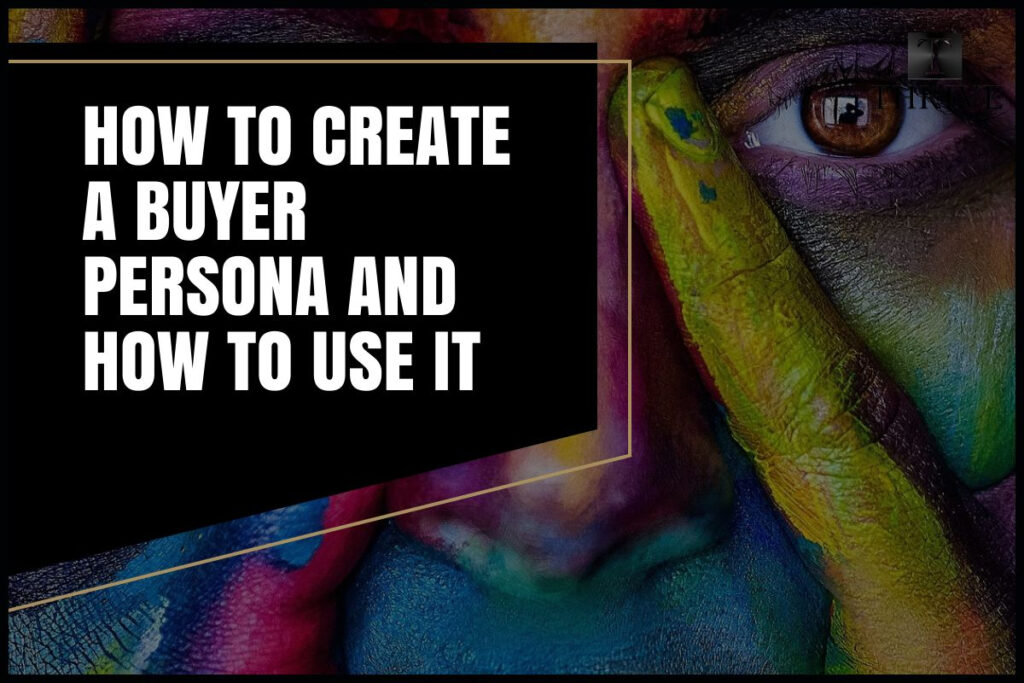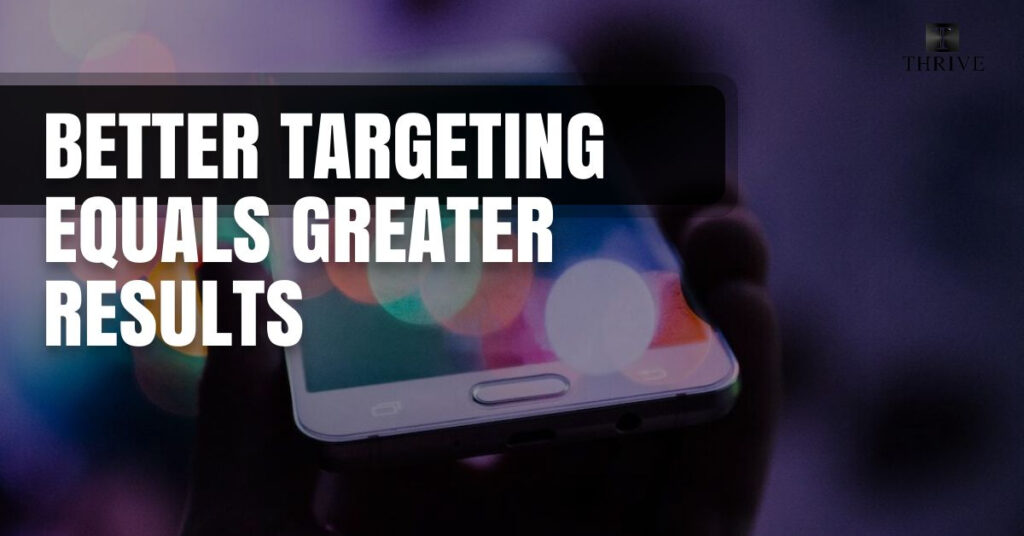
Target Market, Avatar, Persona this is what they are and how to use yours
As a business owner or marketer, it’s crucial to identify and understand your target audience.
Your target audience represents the group of people most likely to purchase your products or services, and understanding their needs, preferences, and behavior is essential for crafting a successful marketing strategy. Let me share a story with you to explain just how valuable it can be. . .
There was a leadership coach, we will call him John who ran a successful consulting business helping leaders in various industries improve their skills and achieve their goals.
However, despite his expertise and track record of success, John struggled to attract and retain clients. He found himself constantly competing with other coaches and consultants, and his business seemed to be stuck in a rut.
He realized that he had never taken the time to define his target client thoroughly. Sure he knew the title of executives he wanted to reach but it stopped there. He had assumed that any leader in any industry would be interested in his services, and as a result, he had spread himself thin trying to appeal to everyone. This caused him to focus on services that were scattered and didn’t have a solid cohesive connection.This approach wasn’t working.
Feeling frustrated and stuck he reached out to me. I walked him through the process in a short 20 minutes, then we created a solid marketing strategy for his business.
Together we spent time researching and analyzing his current and past clients, looking for common characteristics and needs. He also considered the types of clients he wanted to attract in the future and we combined this into a deliverable that he could use to communicate with his ideal clients.
With this newfound understanding, John was able to create a targeted marketing plan and focus on attracting his ideal client. He redesigned his website and social media profiles to better reflect his brand identity, brand messaging and target audience. He also began offering specialized services and packages specifically for his target client.

The results were almost immediate. John saw an increase in enquiries and bookings, and his clients were more engaged and satisfied with his services. He was finally able to build a successful business that resonated with his ideal client and stood out in a crowded market.
John learned that defining his target client was crucial to the success of his business. By taking the time to understand his ideal customer, he was able to create a cohesive brand identity and market his services effectively, resulting in increased enquiries and a loyal client base.
Why Defining Your Target Audience Is So Important
Here are a few key reasons why defining your target audience is so important it helps you create:
- Targeted and effective marketing campaigns. By understanding your target audience, you can craft messaging, visuals, and offers that are more likely to resonate with them and drive conversions. For example, if you know that your target audience is primarily young professionals who value convenience, you might focus on highlighting the ease and speed of your online ordering system in your marketing efforts.
- An optimize your marketing budget. By focusing your marketing efforts on a specific group of people, you can allocate your budget more efficiently and see a higher return on investment. For example, if you know that your target audience is primarily active on social media, you might allocate a larger portion of your budget to social media advertising rather than print ads or other channels that may not be as effective at reaching your target audience.
- Relevant and valuable content. When you understand your target audience, you can create content that addresses their specific pain points, challenges, and interests. This helps you build trust and credibility with your audience and establish your brand as a valuable resource. For example, if you know that your target audience is primarily small business owners, you might create blog posts or webinars that provide practical tips and strategies for growing and managing a small business.

How Defining Your Target Market Will Help You Get More Business
Defining your target audience can also help you identify new business opportunities and partnerships. For example, if you discover that a particular segment of your target audience has a need that your current products or services don’t address, you might consider expanding your offerings to meet this need.
So, how do you go about defining your target audience? Here are a few steps to follow:
- Start with your existing customer data. If you already have a customer base, analyze this data to get a better understanding of who your customers are and what they value. Look at demographics such as age, gender, location, and income, as well as their interests and purchasing behavior.
- Conduct market research. In addition to analyzing your current customer data, it’s helpful to conduct additional market research to get a broader understanding of your target audience. This can include surveys, focus groups, or industry reports.
- Define your ideal customer profile. Based on your research, create a detailed description of your ideal customer, including their demographics, needs, challenges, and goals. This will help you create a clear picture of your target audience and ensure that all of your marketing efforts are focused on reaching and resonating with this group.
- Continuously monitor and adapt. It’s important to remember that your target audience may change over time, so it’s important to continually monitor and adapt your marketing efforts to stay in tune with their needs and preferences. This can include conducting regular surveys or focus groups, analyzing customer data, and staying up to date on industry trends.

Common Mistakes When Trying To Define Your Target Client
Here are some common mistakes service-based professionals make when trying to define their target client:
- Not being specific enough: It’s important to be as specific as possible when defining your target client, as this will help you attract the right clients and tailor your services to their needs. For example, instead of targeting “small businesses,” you might target “small e-commerce businesses in the fashion industry.”
- Not considering their budget: It’s important to consider your target client’s budget when defining them, as this will help you determine whether they will be able to afford your services.
- Focusing too much on demographics: While demographic information can be helpful in identifying your target client, it’s important not to rely too heavily on it. Your target client may not fit the typical demographic profile for your industry, but still be a good fit for your services.
- Not considering their needs and pain points: (Read my blog on this topic here)To effectively target your ideal client, you need to understand their needs and pain points and tailor your services to address them.
- Not considering their location: Depending on your business, location may be an important factor in defining your target client. For example, if you offer in-person services, you’ll want to focus on clients who are within a certain radius of your business.
- Not considering their values and priorities: Your target client’s values and priorities can have a big impact on their decision to work with you. Make sure to consider these when defining your target client.

Are you trying to sell pain? Such as self improvement?
It can be difficult for some service-based professionals to sell self-improvement and change because it can be a sensitive topic for many people. Some individuals may resist the idea of change or may be resistant to seeking help to improve their behavior or skills.
To sell their services to clients who may be resistant to change, coaches and other service-based professionals can focus on the benefits that the client will receive from making the desired changes. This might include things like improved relationships, increased job satisfaction, or better communication skills.
It can also be helpful to highlight the potential consequences of not making the desired changes. For example, a coach could explain to a toxic leader that their behavior is likely to have negative impacts on their team, and that these negative impacts could be avoided if they are willing to do the inner work to change their behavior.
It’s also important for coaches to be empathetic and understanding, and to approach the conversation in a way that is non-judgmental and supportive. This can help to build trust and create an open and safe space for clients to explore the idea of change.
Ways To Use Your Target Market Ideal Client One Pager
It is important for a service-based professional to clearly define their ideal client and summarize this information onto one page so that they have a clear understanding of who their target market is and can effectively communicate this to potential clients and stakeholders. This information can be shared with a variety of people, including:
- Potential clients: Sharing this information with potential clients can help them understand whether your services are a good fit for their needs and can help them decide whether to work with you.
- Referral sources: Sharing this information with referral sources, such as other professionals or organizations that may recommend your services to their clients, can help them understand the type of client you are looking for and whether they have anyone in their network who may be a good fit.
- Marketing and sales teams: If you have a marketing or sales team, sharing this information with them can help them tailor their messaging and outreach efforts to reach the right audience and effectively sell your services.
- Your own team: Sharing this information with your own team can help ensure that everyone is aligned on the type of client you are targeting and can help ensure that all team members are providing a consistent experience to clients.
Overall, sharing this information with the right people can help you effectively communicate the value of your services to the right audience and build a successful business.
Examples of Tangible Ways To Use Your Ideal Client Summary
There are several formats that you can use to share your avatar or ideal client summary with potential clients. Some options might include:
- Brochure: A brochure is a physical or digital document that provides an overview of your services and can be a useful tool for sharing information with potential clients. You can include information about your ideal client, as well as details about your services, pricing, and how to contact you.
- Presentation: Another option is to create a presentation using a tool like PowerPoint, Google Slides, or Prezi. This can be a good way to visually showcase your ideal client and highlight the value of your services.
- Website: You can also include information about your ideal client and services on your website. This can be a useful way to provide potential clients with a comprehensive overview of what you do and help them decide whether to work with you.
The best format for sharing this information will depend on your specific needs and the preferences of your potential clients. It may be helpful to consider the type of information you want to share, as well as the audience you are targeting, when deciding on the best format to use.
Want us to guide you through this process and do the heavy lifting for you check out our Acceleration Program below!
